How to lose weight diabetes type 2. How to Lose Weight with Type 2 Diabetes: 8 Proven Steps for Success
How can someone with type 2 diabetes lose weight successfully? Discover 8 expert-backed steps that can help you achieve your weight loss goals and improve your health.
Unlock the Secrets to Successful Weight Loss for Type 2 Diabetes
Losing weight is a common goal for many, but for those living with type 2 diabetes, it carries even greater significance. Carrying excess body fat can increase insulin resistance, making blood glucose management more challenging. In fact, research suggests the longer someone has a high body mass index (BMI), the greater their risk of developing type 2 diabetes.
Fortunately, even modest weight loss of 10-15 pounds can make a significant difference in improving health and blood sugar levels for those with type 2 diabetes. However, achieving and maintaining weight loss is no easy feat. The key is to incorporate a healthy, sustainable diet into your overall diabetes management plan. In this comprehensive guide, we’ll explore 8 proven steps to help you lose weight and keep it off when you have type 2 diabetes.

1. Set Small, Realistic Goals
Losing weight is one thing, but keeping it off is another challenge altogether. Drastic diets and extreme exercise plans are often not sustainable in the long run. Instead, focus on making small, realistic changes that you can maintain over time. Set achievable goals, such as walking around the block four times a week or limiting dessert to weekends. As these new habits become ingrained, you can gradually work towards your ultimate weight loss goal. Remember, setbacks happen, but don’t let them derail your progress.
2. Get Moving with Regular Exercise
While diet is the most important factor for weight loss, exercise plays a crucial role in maintaining that weight loss over time. Studies show that people who increase physical activity along with reducing calorie intake will lose more body fat than those who only diet. In fact, research from the National Weight Control Registry found that 90% of people who successfully lost and maintained 30 or more pounds exercised for about an hour a day, with walking being a popular choice.

Aim for at least 150 minutes of moderate exercise per week, or 30 minutes per day for at least 5 days a week. Remember, physical activity doesn’t have to mean intense workouts at the gym. Simple lifestyle changes, like taking the stairs instead of the elevator or parking further away from your destination, can also make a big difference.
3. Prioritize Consistent Meal Timing
Eating regular meals, including breakfast, can be a game-changer for weight loss success when you have type 2 diabetes. Many participants in the National Weight Control Registry reported that they ate breakfast, which may help prevent overeating later in the day and stabilize blood sugar levels.
Experts recommend eating three meals a day at consistent times to help your body better utilize insulin. Your breakfast should include fiber-rich, healthy carbohydrates like whole grains, fruits, and low-fat dairy to keep blood sugar in check. Always read labels and avoid breakfast foods with added sugar.
4. Carefully Manage Your Calorie Intake
Consuming too many calories and too much fat can negatively impact blood glucose levels. Working with a registered dietitian or diabetes educator can help you determine the right calorie intake for your individual needs, based on factors like age, gender, and activity level. They can also provide guidance on building a meal plan that aligns with your weight loss goals and taste preferences.

5. Focus on Nutrient-Dense, High-Fiber Foods
When it comes to losing weight with type 2 diabetes, it’s essential to choose nutrient-dense, high-fiber foods that will keep you feeling full and satisfied. Foods like vegetables, fruits, whole grains, lean proteins, and healthy fats should make up the bulk of your diet. These foods are generally lower in calories, higher in fiber, and can help stabilize blood sugar levels.
On the other hand, try to limit your intake of refined carbohydrates, added sugars, and unhealthy fats, as these can contribute to weight gain and poor blood sugar control.
6. Stay Hydrated and Limit Sugary Beverages
Drinking plenty of water is crucial for weight loss, as it can help you feel full and flush out toxins. Aim to drink at least 8 cups (64 ounces) of water per day. Avoiding sugary beverages, such as soda, juice, and sweetened coffee drinks, is also important, as they are high in calories and can spike blood sugar levels.
If you’re craving a sweet drink, opt for unsweetened sparkling water or herbal tea instead. You can also add a slice of lemon or lime to your water for a refreshing, low-calorie flavor boost.

7. Get Enough Sleep and Manage Stress
Maintaining a healthy sleep schedule and finding ways to manage stress can also support your weight loss efforts when you have type 2 diabetes. Lack of sleep and high stress levels can disrupt hormones that regulate appetite and metabolism, making it harder to lose weight. Aim for 7-9 hours of quality sleep per night and explore stress-reducing activities like meditation, yoga, or deep breathing exercises.
Remember, weight loss is a holistic process, and factors like sleep and stress management play a crucial role in your overall health and success.
8. Be Patient and Persistent
Losing weight and keeping it off is a long-term journey, and it’s important to be patient and persistent. Celebrate small victories along the way, and don’t get discouraged by setbacks. Stick to your plan, make adjustments as needed, and trust that consistent, healthy habits will pay off in the long run.
Remember, the benefits of successful weight loss for individuals with type 2 diabetes are significant, including improved blood sugar control, reduced risk of complications, and enhanced overall health. By following these 8 proven steps, you’re well on your way to achieving your weight loss goals and taking control of your diabetes.

8 Steps to Weight-Loss Success
Losing weight is at the top of many of our to-do lists. But for people who have type 2 diabetes, weight control is especially important. “Carrying excess body fat increases the body’s resistance to insulin, making blood glucose management more challenging,” says Sue McLaughlin, RD, CDE, a certified diabetes educator at Burgess Health Center in Onawa, Iowa.
Some research has found that the longer someone has a high body mass index, or BMI (a common measure of being overweight or obese), the greater their risk of developing type 2 diabetes. Fat tissues are active, releasing and responding to hormones that increase the risk of metabolic syndrome, which can include diabetes. But losing even 10 to 15 pounds can make a big difference in improving your health and blood sugar levels.
Anyone who’s tried to lose weight — and keep it off — knows it isn’t easy. It is possible, and the benefits for people with diabetes are great, but how do you get started? Experts say the right way to lose weight when you have diabetes is to incorporate a healthy diet into your overall management plan.
Here’s how to lose weight when you have diabetes and get started on the path to weight loss success.
1. Set Small and Realistic Goals
Losing the weight is one thing; keeping it off is another. While everyone wants to see the pounds fall off in the first days of a diet, drastic diets and extreme exercise plans aren’t sustainable. Try to focus on changes you can maintain for the long haul.
“Don’t try to transform your body all at once,” advises McLaughlin. “That can be a recipe for failure.” Instead, set small, realistic targets, such as walking around the block four times a week or having dessert only on the weekend rather than every day.
After these goals become habits, move on to your next objective. You’ll have a feeling of accomplishment as you progress toward your ultimate weight loss goal. And remember that setbacks happen to everyone, so don’t give up!
2. Get Active
Studies suggest that diet is hands-down the most important factor for losing weight, but exercise is key to successfully keeping the pounds off over time. “Research shows that people who increase physical activity along with reducing calorie intake will lose more body fat than people who only diet,” says McLaughlin.
“Research shows that people who increase physical activity along with reducing calorie intake will lose more body fat than people who only diet,” says McLaughlin.
One study found that exercise was actually more important than diet for weight loss maintenance among people who lost 30 or more pounds. And according to a self-reported weight control registry maintained by Brown University’s medical school, about 90 percent of people who reached and maintained their weight loss goal said they exercise, on average, about an hour a day. (Most people in the registry chose walking as their form of exercise.)
Aim for 150 minutes of moderate exercise per week, or 30 minutes per day at least 5 days a week. And remember, fitness doesn’t necessarily have to involve sweating for hours at the gym. Try to find ways to stay active throughout the day. To hit the American Diabetes Association’s (ADA) goal of watching less than 10 hours of TV per week, take a 10-minute walk around the block after dinner instead of hitting the couch. Park farther away from each destination to add more steps, and take the stairs when possible. All of these incremental changes can make a big difference over time.
Park farther away from each destination to add more steps, and take the stairs when possible. All of these incremental changes can make a big difference over time.
3. Schedule Your Meals, Including Breakfast
A common characteristic among the weight control registry participants is that most of them reported that they ate breakfast. Skipping breakfast is thought to possibly lead to overeating later in the day, which can sabotage weight loss plans and cause blood sugar levels to fluctuate. People who eat breakfast may also have more energy to stay more active throughout the day.
The importance of a morning meal for weight loss has been debated. One meta-analysis showed that eating breakfast was associated with better weight loss, but a more recent review of studies found that breakfast may not always lead to weight loss. Still, the ADA recommends eating breakfast every day. Experts say an effective diabetes diet involves eating three meals at regular times of the day to help the body better use insulin.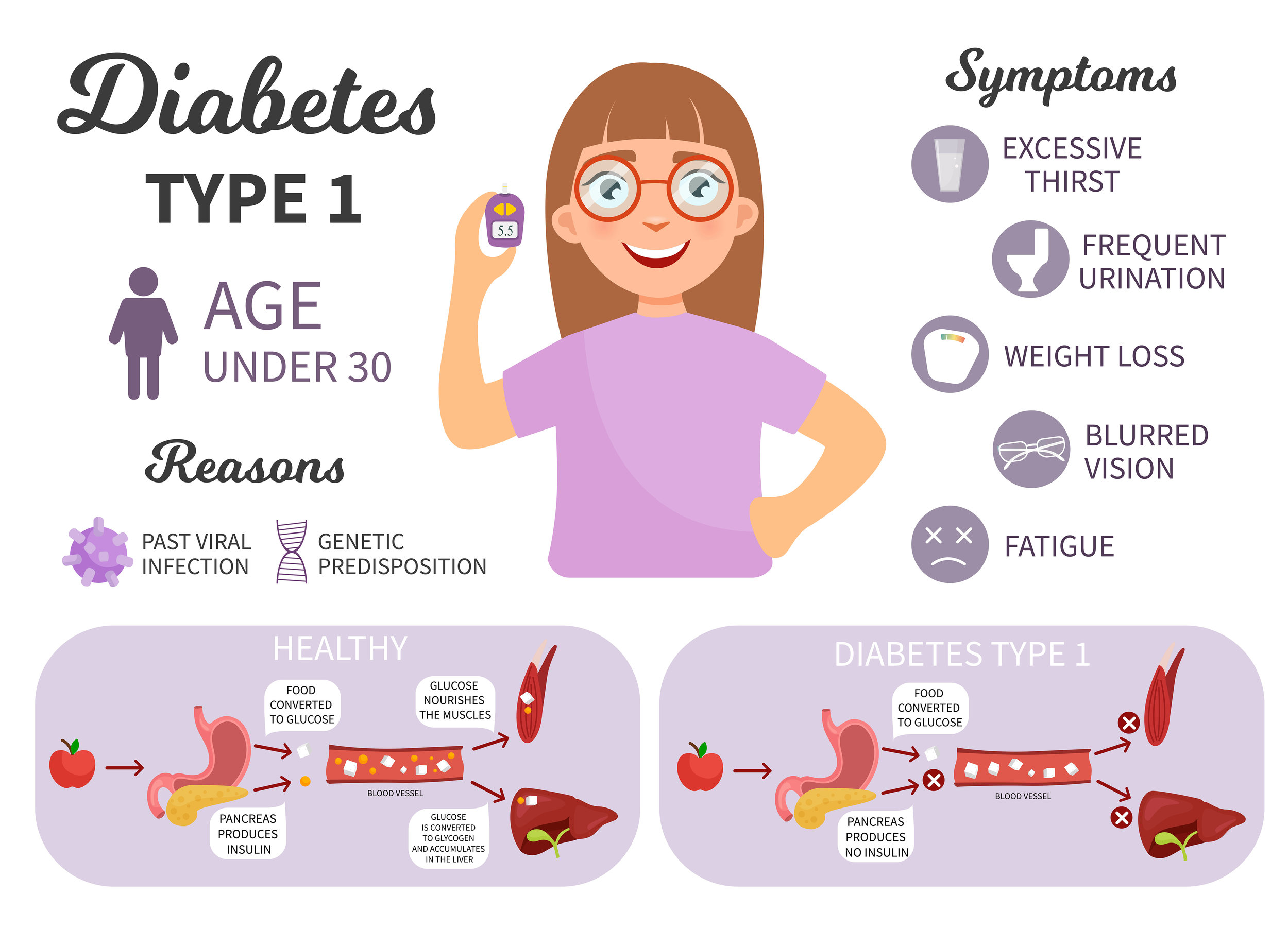
Breakfast should include fiber-rich, healthy carbohydrates, such as whole grains, fruits, and low-fat dairy, to help keep blood sugar levels in check. Always review labels before you buy packaged foods, and skip cereals and other breakfast foods with added sugar.
4. Cut Calories
Eating too many calories and too much fat can raise blood glucose levels. Cutting back on calories is key to losing weight.
It’s a good idea to work with a registered dietitian or diabetes educator to figure out a diet plan that works for your lifestyle, goals, and tastes. They can help you find the right number of calories to consume, depending on a number of factors — age, gender, current weight, activity level, body type — while managing your blood sugar levels.
5. Feast on Fiber
Cutting calories isn’t always easy, especially if you’re hungry shortly after you finish your meal. Enter fiber: Your body can’t break down this plant-based carbohydrate, so it slows the digestion process as it moves through your system, which helps control blood sugar levels.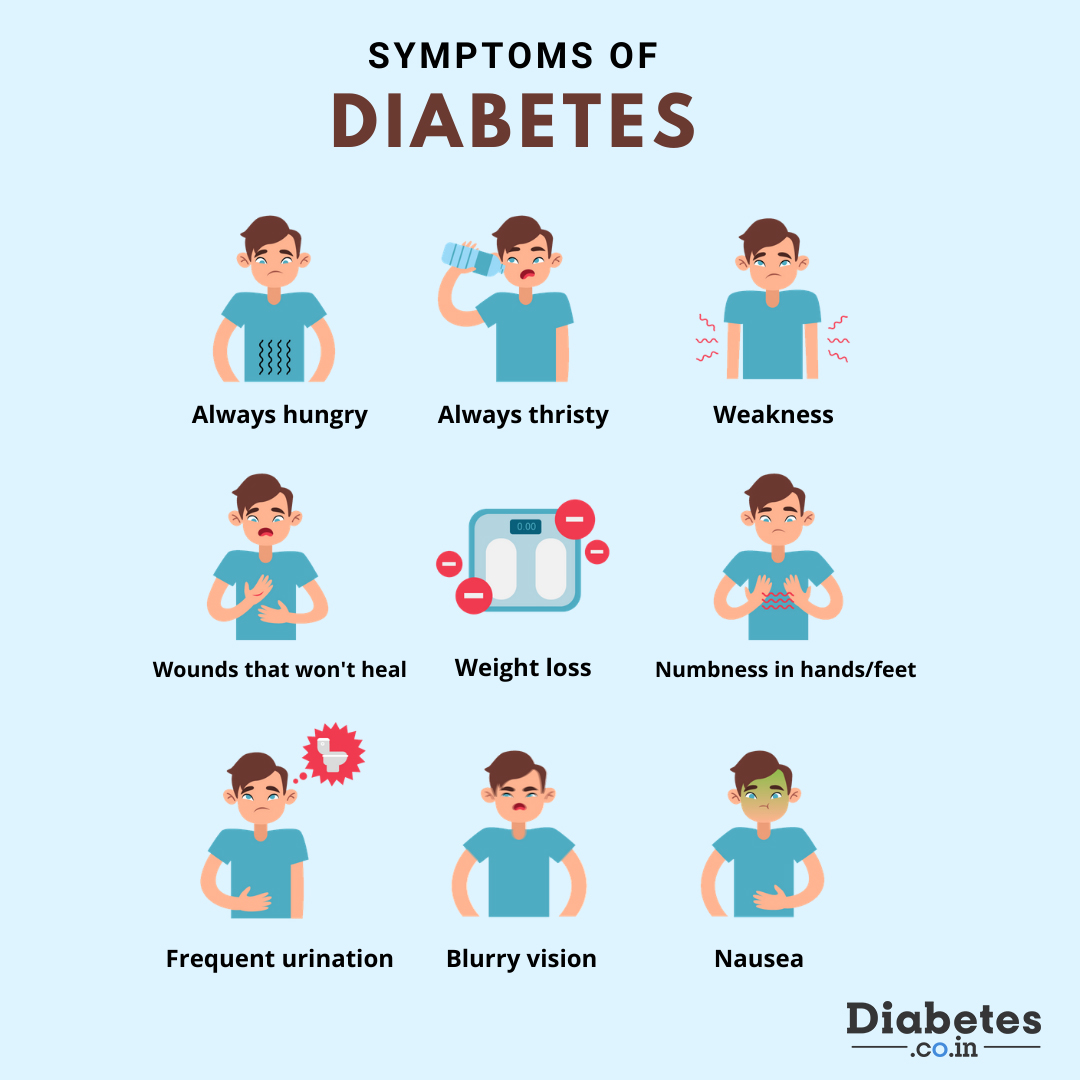
Foods that are high in fiber tend to be lower in calories, so you can eat a larger volume than other foods for the same number of calories. Since they take longer to eat and digest, they can help you feel fuller for longer. A study published in April 2023 found that people who eat more fiber are better able to stick to a lower calorie diet and lose more weight.
According to the U.S. Department of Agriculture’s (USDA) 2020–2025 Dietary Guidelines for Americans, women ages 31 to 50 should aim for at least 25 grams (g) of fiber daily, while men in that same age range should eat about 31 g. With age, calorie and nutrient requirements drop; women ages 51 and over require about 22 g daily, while men in the same age range need at least 28 g.
Most of us don’t get anywhere near the USDA’s guidelines. Try to find ways to incorporate fiber-rich foods, including whole grains, vegetables, fruits, legumes (beans), and nuts and seeds into more meals. Add chickpeas and black beans into salads, soups, and chili. Toss spinach into pasta sauce. Or snack on an apple with a tablespoon (tbsp) of nut butter.
Toss spinach into pasta sauce. Or snack on an apple with a tablespoon (tbsp) of nut butter.
6. Keep Track of Your Goals and Progress
Writing down the details of your weight loss journey helps you set healthy targets and notice patterns. You’ll be able to appreciate your progress over time, as well as notice when your diet might have gotten a bit off track.
Try jotting down all of the foods you eat, including the serving sizes and time of day, in a journal every day. Not a fan of pen and paper? Try one of the many free apps. It’s a good idea to weigh yourself at least once a week, per your doctor’s, registered dietitian’s, or diabetes educator’s recommendation, to keep track of your progress. You might also want to write down when you exercised, what you did, and how you felt after.
7. Get Support
Staying motivated to stick with a weight loss plan can be difficult when you’re going it alone. Connecting with others can provide the emotional support you need to avoid giving up. Many weight loss programs are founded on the concept that support networks aid motivation.
Many weight loss programs are founded on the concept that support networks aid motivation.
Keep in mind that support comes in many different forms. “For some people, online support groups can be just as effective [as in-person support groups], as well as more convenient and less costly,” says McLaughlin.
8. Use Tricks to Prevent Overeating
These sneaky strategies can help keep you from overdoing it on diet-damaging foods.
- Fill up on low-calorie foods first. “Start every meal with the foods on your plate that are lowest in calories,” suggests McLaughlin. Non-starchy vegetables make the perfect low-calorie starter. By the time you get to the other foods, you won’t be so hungry.
- Change your salad dressing system. Instead of sprinkling or pouring dressing on your salad, dip your fork into a side dish of dressing and then your salad with each bite. You’ll be amazed how much less you use and how many calories you save.
- Take up a busy-hands hobby.
 If you’re idle, you’ll be more prone to eating when you’re not really hungry. Keep busy with activities like walking, knitting, scrapbooking, doing crossword puzzles, or gardening.
If you’re idle, you’ll be more prone to eating when you’re not really hungry. Keep busy with activities like walking, knitting, scrapbooking, doing crossword puzzles, or gardening. - Carry a toothbrush and toothpaste. Keep them in your purse or briefcase. When cravings hit, brushing your teeth with peppermint-flavored toothpaste can dampen your desire to eat.
- Arrive fashionably late to parties. Without as much time near the buffet table and calorie-rich appetizers, you’ll likely eat less.
It’s important to continue to eat healthy and exercise regularly even after reaching your weight loss goal. That’s why it’s so important to set realistic goals from the get-go: The healthy habits you initiate to lose weight should last a lifetime so you can keep it off.
Additional reporting by Colleen de Bellefonds
7 Healthier Pasta Tips for People With Type 2 Diabetes
With the right prep, you can still enjoy pasta for dinner without sending your blood sugar soaring or derailing any weight loss goals.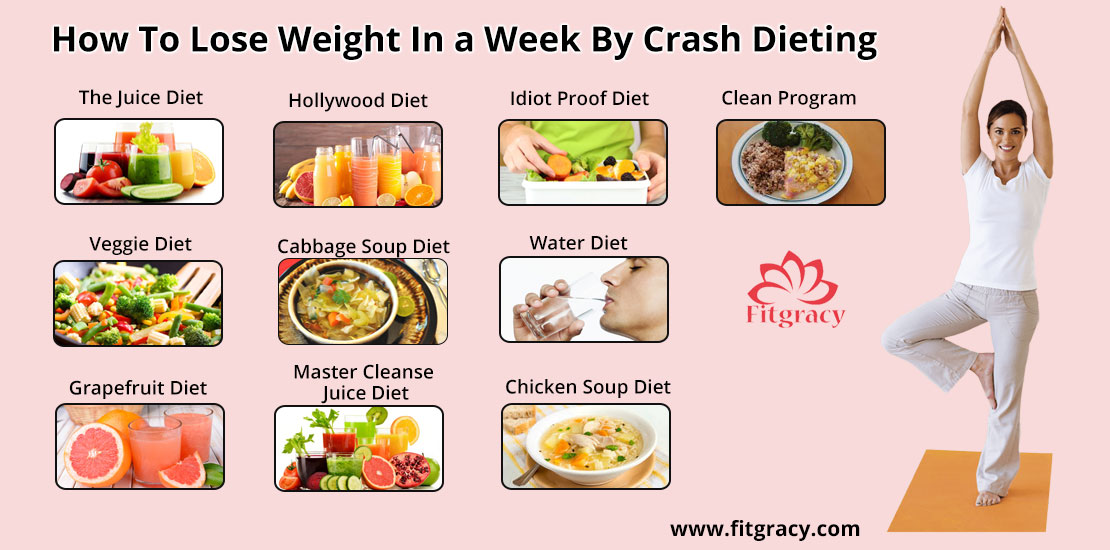 Certified diabetes…
Certified diabetes…
By Lauren Bedosky
The Best Nuts for Diabetes: Walnuts, Almonds, and More
Nuts can be a good snack for people with type 2 diabetes because they may help prevent heart disease, keep blood sugar controlled, and even aid weight…
By Moira Lawler
Is the Mediterranean Diet Best for Diabetes?
Research shows the heart-healthy Mediterranean diet is also beneficial for people with type 2 diabetes. Read how this approach helps lower A1C and rev…
By Jessica Migala
7 Low-Carb Diet Mistakes to Avoid When You Have Diabetes
Cutting carbs is a mainstay of diabetes management, but it’s not foolproof. Avoid these potential mistakes on a low-carb diet for better health with type…
By K. Aleisha Fetters
10 Warning Signs of Low Blood Sugar
Hypoglycemia symptoms include having anxiety, emotional instability, dizziness, and lightheadedness. Here’s a list with more signs to watch for.
Here’s a list with more signs to watch for.
By Melissa Johnson
4 Tips for Making Latin Food Type 2 Diabetes–Friendly
White rice, sweets, and red meat are staples in Latin cuisine, but those ingredients aren’t good for diabetics. Here, a chef with a family history of …
By Sheryl Huggins Salomon
6 Tips to Reduce Stress if You Have Diabetes
Stress management is an important skill to develop when managing diabetes. For one, it can lower your risk of future health complications. Here are six…
By Moira Lawler
The Best Ways to Enjoy Dark Chocolate When You Have Diabetes
When you have diabetes, dark chocolate is a great dessert option rich in flavonols that may help lower blood sugar and reduce the risk of heart disease…
By Stephanie Bucklin
7 New Ways to Make Sweet Potatoes Part of Your Diabetes Diet
Sweet potatoes are one of the best foods for people with diabetes because of their fiber content.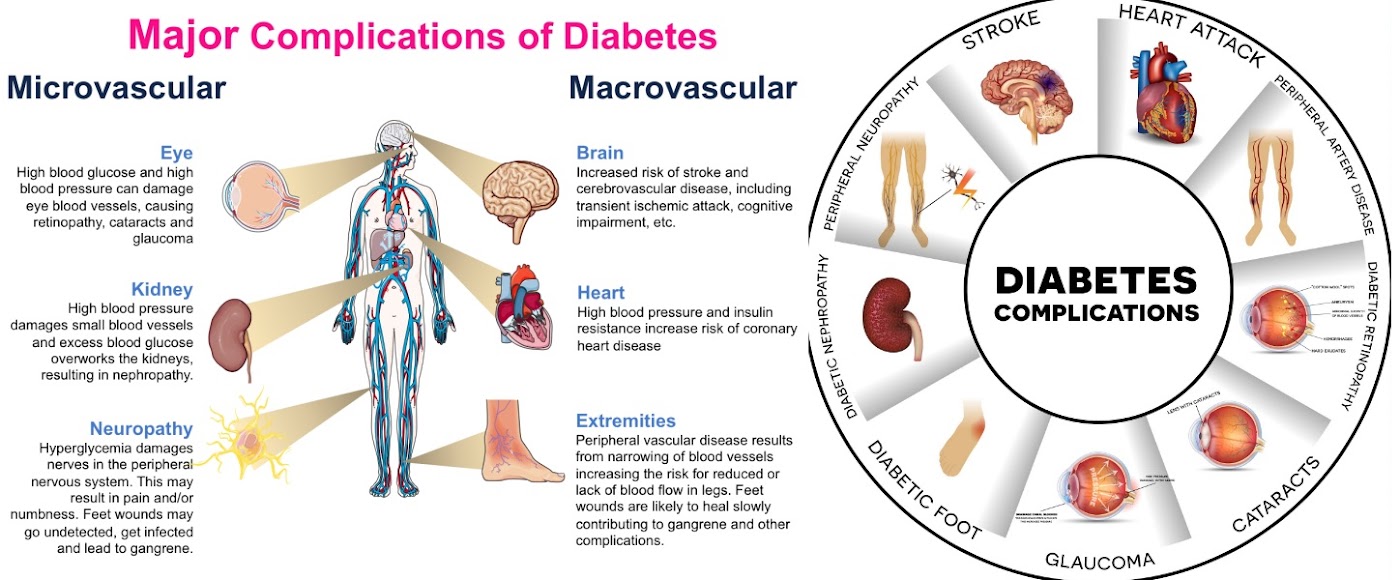 Check out these tips for incorporating them into your…
Check out these tips for incorporating them into your…
By Amy Gorin, MS, RDN
How To Lose Weight if You’re Diabetic
It is crucial to maintain a healthy weight if you have
diabetes. Maintaining a balanced weight can help control blood sugar levels and lower the chance of developing additional issues, such as a stroke or heart attack.
Choose safe methods for weight loss for people with diabetes to keep your overall health in good shape. If you attempt to reduce weight too quickly or recklessly,
side complications could result. Using safe and long-lasting ways of weight loss for diabetics can lower the risk of adverse effects and help you
keep off the lost weight.
How to Lose Weight With Diabetes?
Unexpected reduction of weight, a
cause of type 2 diabetes, have some patients wondering how to stop weight loss in diabetes. Nonetheless, suppose you have diabetes and are not losing weight. In that case, you should shed weight because it is
In that case, you should shed weight because it is
beneficial when you have the condition.
Losing weight for people with diabetes is vital, so you must consider several factors in selecting an effective weight-loss method. Your age, overall health, and the amount of weight you need to shed are all aspects.
See a medical expert before beginning a new weight loss regimen is best. Anyhow, the following diet recommendations can be helpful if you are a person with diabetes to lose weight..
1. Consider Meal Replacement Products.
Meal replacement shakes formulated for diabetic patients or calorie-restricted frozen meals can make adhering to structured lower-calorie eating plans easier. According to a
study, meal replacement diets are more effective than regular diets.
You can create meal replacement drinks using whole foods and protein powder. Also, choose prepared shakes with 15 to 20 grams of protein per container and fewer than 250 calories.
This is a delicious and reliable way to lose weight for diabetics. Consider consuming fresh fruits and vegetables with your meal replacement shakes. They provide chewing satisfaction, which helps to satiate hunger and make you feel fuller and more content than if you drank the shake.
2. Apply Vegetarian or Vegan Diets.
If you have diabetes, you can
adhere to a strict vegetarian or vegan diet. These diets can help you
lose weight, fasting glucose, and waist circumference if you follow them.
Vegetarian diets often consume animal products such as milk, eggs, and butter, but no meat. However,
vegans will not consume meat or animal products like honey, milk, or gelatin.
The
following foods are healthy for vegetarians and vegans with diabetes:
- Legumes
- Fruits
- Whole grains
- Beans
- Soy
- Dark, leafy vegetables,
- Nuts
Vegetarian and vegan diets must be carefully planned to ensure that essential nutrients are not lost. By employing vegan and vegetarian diets, you must augment your diet with the
By employing vegan and vegetarian diets, you must augment your diet with the
following nutrients, which are
hard to obtain from these diets.
- Calcium.
- Iodine.
- B12.
- Zinc.
Before beginning any new supplement regimen, consult a trained healthcare expert to ensure safety.
3. Employ the DASH Diet.
The
DASH diet was designed to help lower blood pressure and has many additional benefits. It is a
balanced, healthy diet for everyone, not only those with diabetes.
Suppose you want to follow the DASH diet. In that case, you should consume
fewer portions of foods high in potassium, calcium, and magnesium, nutrients that lower blood pressure.
The DASH diet includes the
following:
- Fat-free or low-calorie dairy products
- Whole grain grains
- Lean protein: fish and chicken
- Foods derived from plants: vegetables, fruits, beans, nuts, and seeds
- Healthy fats: vegetable oils
If you follow this diet, you should limit your sodium consumption to
2,300 milligrams per day. Additionally, sweets, sugary beverages, and red meats are restricted.
Additionally, sweets, sugary beverages, and red meats are restricted.
4. Practice the Mediterranean Diet.
You can implement the
Mediterranean diet, which includes food selections and cooking practices unique to the Mediterranean region. Diabetes patients have been shown to
benefit from Mediterranean diets. The average diet consists of the
following:
- a variety of vegetables,
- herbs, and spices
- olive oil
- fish
- eggs
- whole grains
- fruits in moderation
- nuts and seeds
5. Try the Low-Carbohydrate Diet.
To lose weight, persons with diabetes often turn to low-carb diets. When you adopt
this diet, you should reduce your carb consumption and increase your intake of healthy fats and proteins.
A
study suggests that cutting back on carbs is how to lose weight with type 2 diabetes which helps to control glucose levels. On a low-carb diet, a person might have to cut back on foods
like
- White bread
- potatoes
- Rice
- Cakes
- Sweets
- Bagels,
- Pasta
You should also eat a lot of vegetables and get a lot of protein from fish, lean meats, and eggs.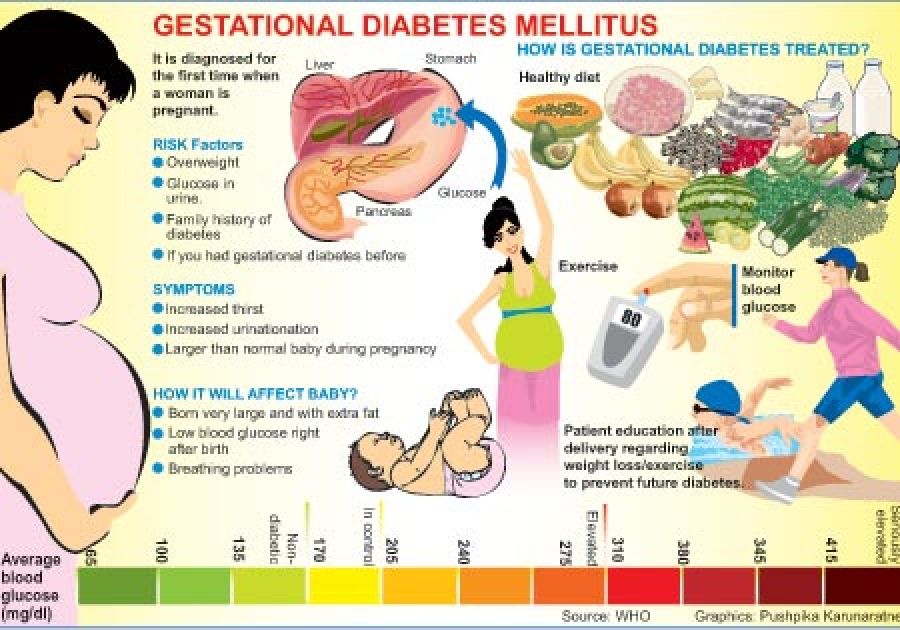 Nonetheless, there are many different kinds of low-carb diets. Most of them involve cutting back on carbs.
Nonetheless, there are many different kinds of low-carb diets. Most of them involve cutting back on carbs.
6. Engage in Exercise
Exercising helps with weight loss with diabetes while
keeping your blood sugar in check. Talk to your doctor first if you haven’t worked out yet. If there are any restrictions, they can let you know. Otherwise, get
at least two and a half hours a week of brisk walking and moderate aerobic exercise to improve your health.
You’ll need to move around more if you want to lose weight. Strength training should also be done at least
twice a week. You can use weight machines at the gym,
hand weights, or even your body weight (think pushups, lunges, and squats).
Physical activity
burns both the sugar in your blood and the sugar stored in your muscles and liver. When you have diabetes and take insulin or other diabetes medicines, you should closely monitor your blood sugar levels when you start working out. Regular exercise and working with your doctor can aid in
reducing insulin resistance.
Consult the medical experts.
If you’re looking for a “diabetes doctor near me” or a “weight loss clinic in Houston, Texas,” go to
Houston Family Practice.
Our medically supervised
weight loss program is facilitated by our expert medical professionals, who would love to assist you in your weight loss journey.
Call us today at 713-520-6016 to schedule your appointment.
How to lose weight with diabetes
Maintaining body weight within the physiological norm is important for a diabetic, not only for reasons of beauty. If glucose metabolism is disturbed, a set of extra pounds can negatively affect well-being and provoke the progression of the disease. The question of how to lose weight with diabetes is relevant for many people, regardless of gender and age.
Dietary recommendations for type 1 and type 2 diabetes may differ, since in type 1 disease the insulin-producing function of the pancreas is completely lost, and in type 2 disease it is partially preserved. The diet for weight loss in the second type is distinguished by a sparing regimen and a limitation in the duration of adherence.
The diet for weight loss in the second type is distinguished by a sparing regimen and a limitation in the duration of adherence.
What causes weight gain?
The main reason for gaining extra pounds is a violation of the process of glucose utilization, as a result of which it is converted into glycogen and fats. Before losing weight with type 2 diabetes, it is necessary to create favorable conditions in the body for the utilization of glucose from food. The accumulation of fatty tissue in the region of the anterior abdominal wall negatively affects the process of insulin production, which contributes to the progression of the disease.
In addition, obesity in combination with diabetes is fraught with complications such as hypertension, coronary heart disease and thrombophlebitis. The main feature of losing weight in type 2 diabetes is a gradual change in diet and a smooth refusal to use certain foods. It is important to remember that weight loss through fasting is categorically unacceptable for weight loss in diabetes.
How to lose weight with type 1 diabetes?
The main source of energy in the human body is glucose. With type 1 of this disease, the cells of the pancreas do not produce the hormone even in a minimal amount, as a result of which the process of glucose utilization is disrupted. Against the background of this process, the body begins to look for alternative energy sources, which are muscle and adipose tissue. This process is the main cause of dramatic weight loss in type 1 diabetes. Despite weight loss, diabetics need to follow dietary recommendations that exclude the use of sugar-containing foods, fried, smoked, spicy foods that are too fatty, and alcohol.
How to lose weight with type 2 diabetes?
Diet for weight loss in type 2 diabetes mellitus has the following characteristics:
- The calorie content of the daily menu is reduced.
- Meals are taken at the same time, while the frequency of meals is 4-5 times a day, fractionally, in medium portions (about 250-350 g).

- The last meal should be taken no later than 2 hours before bedtime.
- The diet should contain fresh vegetables and fruits rich in fiber.
- Reducing to a minimum or complete exclusion from the diet of foods rich in simple carbohydrates.
The recommended ratio of proteins, fats and carbohydrates in type 2 diabetes is as follows:
- Carbohydrates – from 40 to 60%.
- Proteins – from 15 to 20%.
- Fats – 25 to 30%.
Food products such as sugar, fatty fish and meat, carbonated drinks, puff pastries and rich pastries are under an absolute ban.
It is also recommended to exclude canned meat and fish, beets, raisins, dairy and sour-milk products with a high percentage of fat content, pasta, butter, rich broths, dates, pickles, sausages and cheese with a fat content of more than 15% from the daily menu.
List of allowed foods for type 2 diabetes:
- Green and white beans, young green peas, lentils.

- Raw carrots.
- Cucumbers.
- Grapefruit.
- Zucchini and asparagus.
- Eggplant.
- Mulberry.
- Broccoli.
- Apples.
- Oranges.
- Dietary (veal, rabbit meat, turkey, chicken fillet).
- Bread made from rye flour or with the addition of bran.
It is recommended to cook food by boiling, roasting or steaming. The process of frying should be avoided, since fried food not only has a high glycemic index, but also contains carcinogens that provoke cancer. The answer to the question of whether it is possible to lose weight with diabetes is in the affirmative, since a balanced diet is able to maintain weight even with serious metabolic disorders.
Can I exercise if I have diabetes?
When talking about whether it is possible to lose weight with diabetes by increasing physical activity, it is important to familiarize yourself with the rules of exercise. With diabetes, it is important to observe dosed physical activity, which favorably affects the overall metabolism and glucose metabolism in particular. In order for physical activity to be beneficial, it is recommended to follow these rules:
With diabetes, it is important to observe dosed physical activity, which favorably affects the overall metabolism and glucose metabolism in particular. In order for physical activity to be beneficial, it is recommended to follow these rules:
- The level of physical activity should be increased gradually, starting with simple exercises.
- Exercise is not recommended on an empty stomach or with a full stomach. After eating, 40-50 minutes should pass.
- It is recommended to perform gymnastics every other day.
- The duration of a gymnastic session is 25-30 minutes.
- If the blood glucose level exceeds 14 mmol, physical activity should be temporarily abandoned until the normalization of sugar levels.
Additional recommendations
For diabetics, the recommended amount of sleep for men and women is at least 8 hours. Depending on age and body weight, the daily volume of water consumed should be from 1.5 to 3 liters. The optimum temperature of drinking water is 33-35 degrees. In addition, diabetics should regularly replenish the deficiency of individual vitamins and trace elements by taking pharmacy multivitamin complexes. Of particular value is vitamin A, E, H, C, B1, B6, B12, magnesium, alpha-lipoic acid, manganese, succinic acid.
The optimum temperature of drinking water is 33-35 degrees. In addition, diabetics should regularly replenish the deficiency of individual vitamins and trace elements by taking pharmacy multivitamin complexes. Of particular value is vitamin A, E, H, C, B1, B6, B12, magnesium, alpha-lipoic acid, manganese, succinic acid.
Weight loss in diabetes: nutrition, menu, activity
Type 2 diabetes
August 07, 2020
In diabetes, losing even five kilograms helps reduce the risk of complications and better control blood sugar levels. In addition, losing weight helps reduce insulin resistance (insensitivity) and lower doses of sugar-lowering medications.
Diabetic weight loss plan
You can’t just go on a low-calorie diet or starve to lose a few kilograms with diabetes: a condition that is dangerous to health and life can develop – hypoglycemia. Therefore, you need to lose weight under the guidance of a doctor by developing a step-by-step plan 1 . As a rule, it includes the following items:
As a rule, it includes the following items:
-
increased physical activity – this helps to burn calories and burn fat;
-
reduction of incoming calories due to dietary changes;
-
consumption of foods with fiber, which saturates well and normalizes digestion 2 ;
-
correction of the drinking regime, sufficient fluid intake;
-
fight against stress, which is often “jammed” with dense and high-calorie foods.
Before you start losing weight, you need to undergo an examination and, together with a specialist, determine what percentage of weight you can safely lose in a week or month. On average, weight loss should be no more than one to two kilograms per week. This will keep you healthy and prevent weight gain.
This will keep you healthy and prevent weight gain.
What is important to know
It is desirable that at all stages of weight loss you are constantly monitored by an endocrinologist or nutritionist. It is important to change the diet correctly, reduce the calorie content of food, while not losing the necessary vitamins and minerals. In addition, you need constant monitoring of blood sugar levels, dose adjustment of medications taken.
It’s important that you don’t experience sudden fluctuations in your blood sugar during your weight loss period This adversely affects the metabolism. If you experience conditions such as hypo- or hyperglycemia (low or high blood glucose levels above normal), then the diet or level of physical activity is not chosen correctly.
How to adjust nutrition
You can reduce your calorie intake by an average of 500 kcal per day. This will not affect the state of health in any way, but will lead to the fact that fat reserves will be gradually consumed. The total number of calories in your diet should be distributed in this way:
This will not affect the state of health in any way, but will lead to the fact that fat reserves will be gradually consumed. The total number of calories in your diet should be distributed in this way:
- 1
up to 55% are complex carbohydrates – whole grain cereals, durum wheat pasta, legumes, buckwheat, millet, rice;
- 2
about 25-35% – for fats, mainly vegetable; salads with olive or sunflower oil, dishes with avocados are suitable; it is permissible to eat no more than 10–15 g of butter for breakfast;
- 3
Approximately 10-25% protein foods such as lean meat, poultry or fish, steamed or grilled, boiled, stewed or baked without oil.
It is important that the bulk of the carbohydrate components contain fiber and complex carbohydrates (whole grain bread, cereal side dishes, vegetables).

 If you’re idle, you’ll be more prone to eating when you’re not really hungry. Keep busy with activities like walking, knitting, scrapbooking, doing crossword puzzles, or gardening.
If you’re idle, you’ll be more prone to eating when you’re not really hungry. Keep busy with activities like walking, knitting, scrapbooking, doing crossword puzzles, or gardening.
